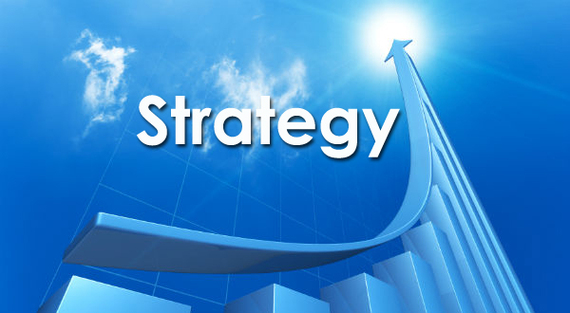This article (the first in a series) is specifically designed for entrepreneurs who are intent upon successfully and rapidly scaling up their businesses. If you fit the following criteria, you may want to read on:
1.) You are bringing to market an innovative, highly disruptive world class product or service.
2.) You are wholeheartedly investing everything you Have and Are into realizing your vision.
3.) You realize that to scale successfully you must acquire skills beyond your current capabilities.
4.) Your motivations for success include both financial gain and making philanthropic contributions.
Let's get started with some good news and some challenging news. The good news is if you're aligned with the above criteria, you're already ahead of the game. The challenging news is that there are literally hundreds of thousands of entrepreneurs just like you who share your extraordinary conviction. So what will ensure that you seize the competitive advantage? Let's find out.
Based on my own entrepreneurial journey, as well as my experience mentoring start-ups scaling to a $1B+ there are five vital points to master. I'll use the word "SCALE" to illuminate them. They are:
Strategy, Capitalization, Accountability, Leadership, and Engagement.
Because of the limitations in article length I'll devote this post to the vital point of Strategy and publish subsequent weekly posts for the remaining four. Here are the Top Five Strategy Points to consider:
Strategy Point #1: Leverage Command To Maximize Growth
From Greek, strategia or stratos means "command that leads to spreading out." The first vital point for successful scaling is about the spreading out of command rather than the coveting of control. While there is much more to strategy than one's philosophical approach to business, the distinction between command and control must not be underestimated as nothing kills expansion like micromanagement.
To "scale" means to "magnify and accelerate." Therefore it's essential to understand that whatever your strengths and weaknesses are, they too will magnify and accelerate and will do so disproportionately. In other words, your weaknesses will magnify at a greater rate than your strengths. You can have 95 "strong points" going for you and all it takes to destroy your momentum is 5 "weak points." The disproportionate formula looks something like this:
95 strengths X 10 = 950 strong points
whereas . . .
5 weaknesses X 100 = 5,000 weak points
Strategy Point #2: Surrender Control And Magnify Command
When it comes to identifying one's weak points the way to exercise command over control is to realize that our weaknesses exist within our "blind spots" and so they are virtually undetectable by us. Spotting our weaknesses is like trying to see our own face without using a mirror. The fastest way to magnify one's command is to enlist the reflections of a seasoned mentor, and doing so prior to investing money and time in scaling will be the wisest decision you'll ever make. To accept this advice however, one must be willing to relinquish the control called, "We're doing fine on our own so we don't need outside help."
Strategy Point #3: Stay Focused And Win In One Market Niche
Whatever product or service you launch it must be world class, insanely salable and totally on-target for success. Not only must it be earth-shattering, it must solve an urgent, pervasive and expensive problem for its customer base. The days of "build it and they will come" are over. Get out there and find out what people want and need and don't build it until you are absolutely sure it's a winner. Once you do, your strategy must be to stay focused on being the "gold medalist" in just one market niche. Once you've nailed that market, wait for offers to flood in that will catapult you into broader lucrative markets.
Strategy Point #4: Avoid "TBS," Technical Brilliance Syndrome
It is important to recognize that brilliance in one domain can be ignorance in another. This is the case when attempting to use technical engineering approaches for non-engineering challenges such as leadership and motivation, building rapport, trust and teaming. At least half of all failed start-ups are due to the founders being overly brilliant when it comes to technical skills and under brilliant in people skills. The irony is that with just a basic grounding in what it requires to coach, lead and support others, highly skilled technical talent can make substantial strides in attaining effective people skills.
Strategy Point #5: Establish A High-Performance Culture Up-Front
The reason to do so is that once performance expectations have been set they're nearly impossible to change. While a small team of 2 or 3 can get away with informal leadership and management protocols, leading a team of 20 will require an exponential leap in expertise. And when the workforce expands to 200, the difficulty of implementing a high-performance culture grows exponentially.
What few start-ups realize is that as their workforce increases in size from 2 to 20 to 200 to 2000 the demand placed on executive teams to provide effective leadership increases by orders of magnitude. This exponential increase is much like earthquake patterning. For example, a "6.0" on the Richter scale is ten times as powerful as a "5.0," and likewise a "7.0" quake is ten times as potent as a "6.0." When an executive team fails to calibrate their leadership strategy commensurate with the exponential expansion of their workforce, the results are much like the devastation of an "8.0" earthquake.
Join me next time for the second in the SCALE series as we explore the vital points of "Capitalization."
Val Jon Farris and his Diamius team mentor a wide array of professionals from enterprise-level Fortune 500 executives and their global workforces, to leading-edge entrepreneurs such as those participating in Richard Branson's Extreme Tech Challenge, to prestigious world class business leaders from YPO and EO and the World Economic Forum. To view his LinkedIn profile click here. For more info about Diamius Multinational click here.





